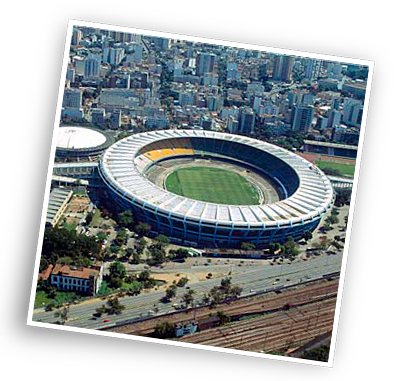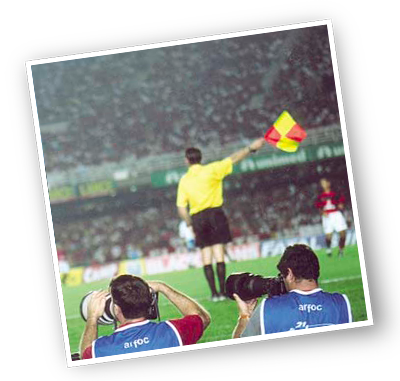A Maracanã Filled with Emotions
The most important sports stadium in Brazil is waiting for you...
Fonte: http://www.infoescola.com/curiosidades/historia-do-maracana/
In the mid-1940’s, the largest stadiums in the world were River Plate Stadium, in Buenos Aires, and Empire State, in the English city of Wembley, with a capacity for 120,000 people. Pacaembu Stadium, in São Paulo, was the third largest in the world, in a tie with the National Stadium of Lisbon, in Portugal, with a capacity for 60,000 people.
President Eurico Gaspar Dutra, in 1948, decided to invest in the planning of a giant soccer stadium to host the 4th edition of the World Cup, in 1950. The stadium was designed by architects Rafael Galvão, Pedro Paulo Bernardes Bastos, Orlando Azevedo and Antônio Dias Carneiro and initially could receive 155,000 spectators.
It was named Mário Filho, in honor of the journalist who founded the newspaper Jornal dos Sports. The opening match took place on June 17, 1950, between teams formed by selected players from Rio and São Paulo, among them the midfielder Didi; the team from the latter city won by 3 x 1. The name &OpenCurlyDoubleQuoteMaracan&ã&OpenCurlyDoubleQuote would come later, from Tupi “marac&á“ (rattle) and “nã“ (similar), designating a sound made by a parrot known as Maracanã-guaçu.
The first official match was held on June 24, 1950: the World Cup match Brazil 4 x 0 Mexico. In 1963, the stadium was the stage of the Intercontinental Cup return leg between Italy’s Milan and Santos, Pel&é’s club, the latter winning the title.
The greatest routing recorded in official matches was Flamengo 12 X 2 São Cristóvã, on October 28, 1956.
Open to visitors, though it is not widely known, Maracanã is a source of inspiration and emotion due to its story and grandeur. It was until recently the largest stadium in the world, on which the Brazilians would witness their country’s defeat in the 1950’s World Cup finals to Uruguay, Pel&é’s thousandth goal, shows by Frank Sinatra, Paul McCartney and in Rock in Rio II; and also the visits of Pope John Paul II, in 1980 and 1997.
Vitacura also takes part in this success story, since 2003 having a Shop and stands within the Maracanã facilities. There the tourist can purchase miniatures of the stadium, T-shirts, balls and official club flags, in addition to key chains, mugs and various gifts with the image of Maracanã.
Come visit the stadium and get to know
the Vitacura Shop in Maracanã!Back to home page


